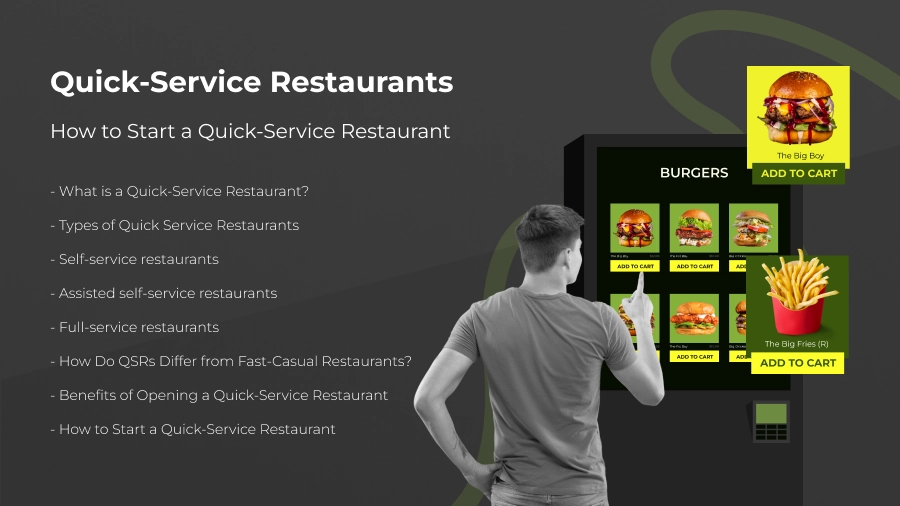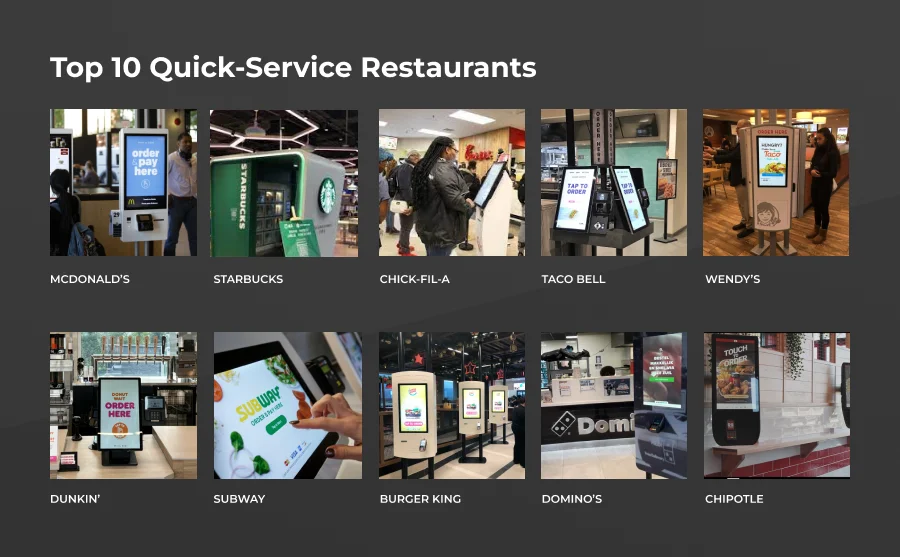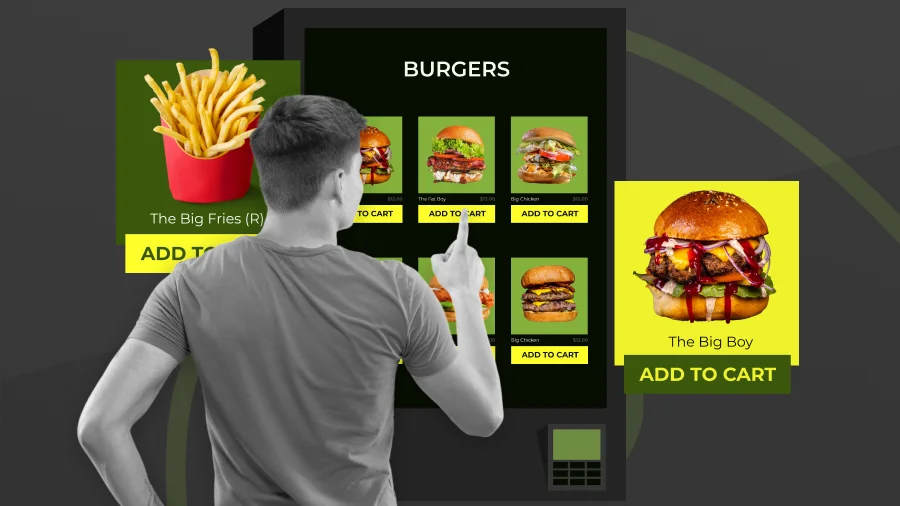Quick Service Restaurants – How to Start a Quick-service Restaurant
A quick-service restaurant is a fast-food eatery that delivers rapidly prepared meals with minimal table service. These restaurants are ideal for folks on the go. They are also great for students who wish to grab a sandwich between classes. These establishments are also ideal for folks with limited time for lunch. The size of quick-service restaurants varies. Small kiosks and major chain restaurants are examples. But their trademark is always speed and convenience.
In the modern era, quick-service restaurants have become more common. Customers desire affordable, quick food options that can be picked up on the go. These restaurants often have a simple POS system and a limited menu, and ordering is done at the counter or through a drive-thru. Many fast-food restaurant chains can be found in cities and towns all over the world. These restaurants have become a staple of the fast-paced, busy lifestyles of many consumers.

Types of Quick Service Restaurants
Quick-service Restaurants usually operate in chains or franchises, as they gain profit from the number of customers who visit them. Operating many stores allows businesses to capitalize on the footfall frequency from multiple locations and increase the worth of the company. For example, Starbucks caters to complimentary food items or a particular type of food. Starbucks serves beverages as well as small foods that match its flavor. Similarly, Pizza Hut and Domino's serve fast food and light beverages. A high degree of standardization is required at a QSR to deliver quick services to customers, which include
1. Self-service restaurants
Customers in this sort of QSR approach the ordering counter to place and collect orders. They retrieve the order from the counter once it is prepared and notified.
2. Assisted self-service restaurants
These QSRs are locations where either the customer's order is collected at the table, or the food is delivered to the customer's table by a staff member.
3. Full-service restaurants
These are the locations where the staff at the table takes orders and delivers food.
How Do QSRs Differ from Fast-Casual Restaurants?
QSRs and fast-food restaurants are often compared to fast-casual restaurants, and the two types of restaurants do have some similarities. However, certain key differences between the restaurant formats can help you distinguish between the two.
Quality and speed
Both QSRs and fast-casual restaurants emphasize fast service, although fast-casual restaurants usually prepare food to order. Quick-service restaurants, on the other hand, cook their menu items ahead of time to ensure almost instant food delivery. This means the service in QSRs is usually faster, food quality can be slightly lower.
Takeout or dine-in?
QSRs and fast-casual restaurants typically provide both dine-in and takeaway food. Diners in fast-casual restaurants, on the other hand, are more likely to take their time dining in the restaurant. Keeping this in mind, fast-casual restaurants are more likely to invest in interior design to create a specific vibe.
Drive-Through
A drive-through option is unusual in fast-casual restaurants, although it is common in QSRs. Drive-throughs help restaurants by freeing up tables for customers inside and reducing wait times.
Fast-casual restaurants prepare food fresh to order, therefore service is typically slower than at QSRs. Drive-through models do not function in fast-casual restaurants since the food does not arrive instantly.
Benefits of Opening a Quick-Service Restaurant
You should know what a quick-service restaurant is by now, but you might be asking why you should open one. Working in the fast-food industry has several benefits.
Large market segment
Customers love fast food. The US fast food and quick service restaurant (QSR) market size was estimated at USD 293.8 billion in 2023 and is expected to reach around USD 454.3 billion by 2030. It is a big market with enormous growth potential.

Owning and operating a QSR might be an excellent way to enter the food service industry, given that the market is not diminishing. With the right marketing strategy, your fast-food restaurant can be the next big thing.
High Customer Retention
Because so many customers take food to go or utilize the drive-through, QSRs benefit from high customer turnover rates.
Even if diners opt to eat at the restaurant, the quick service means they are unlikely to sit for a long period of time – tables in QSRs tend to free up quickly. This means that it is simple to serve a large number of consumers in a single service period – and more customers served means more revenue for your business.
Franchising
Many fast-food restaurants use a franchising system, so you can open a fast-food restaurant under a larger umbrella company. You will be in charge of day-to-day operations, but you will use existing branding and serve food that customers already know and enjoy.
Because the general public is already familiar with the more popular brand, opening a franchise makes it easier to create a consumer base. You can keep your marketing costs minimal and get started right away.
Low Operating Costs
Most QSRs have lower operational costs than full-service restaurants.
Because many diners take their food to go, renting or buying a smaller retail location, as well as hiring a smaller staff, is an option. Because you're likely to have a standardized menu that doesn't change from month to month, the cost of ingredients can be lower than at fine-dining restaurants. This means you can order food in bulk to save money.

How to Start a Quick-Service Restaurant
While the top 20 QSR restaurants are all big fast-food chains, not every quick-service restaurant has to be – and in fact, most are not. You don't need a drive-thru, greasy fried chicken, or a broken ice cream machine to be a successful QSR business in 2023. Here's what you need to know if you want to start your own quick-service restaurant.
1. Create a business plan
Creating a business plan is the first step in launching any business, and the fast-food industry is no exception. A restaurant business plan is a roadmap for your entire project, explaining how you will fund, manage, promote, staff, and run the business once it is open. Understanding your business's unique model will make the rest of the process simpler.
You'll discuss your company overview (what kind of quick-service restaurant are you? What could your menu items be?), your operations (who are your suppliers? What is your staffing model and service offering? Are you a franchisee or an independent?), your technology (would you use kiosks or provide full-service counters? Which quick service restaurant POS system are you intending to use?) and even more specifics to help you get started (what sets you apart from your competitors? What fast service restaurant trends are you leveraging?).
Plan your quick-service restaurant business here. Also, be sure to check all of the boxes on our restaurant opening checklist.
2. Secure Financing
Even if you only consider franchise fees, the initial investment in opening a restaurant can be really expensive, and most people do not have that kind of cash on hand. Fortunately, restaurant financing is available, and there are various options to consider.
3. Obtain Licenses and Permits and Establish a Business Structure
To open and operate your QSR, you'll need several different licenses and permits, so check with your local and state rules for what a business must do to get out on the right foot. You should also speak with an accountant or a lawyer to assist you in setting up your tax documentation (such as a DBA and an EIN) and ensure that all of your permits and licenses are in order.
4. Locate and Purchase Equipment
Finding a perfect location can be tough, and it's often worthwhile to engage the assistance of a commercial real estate professional. If you have a lot of connections in the industry in your town, keep an ear to the ground and see if any recently closed restaurants need someone to take over their space.
Once you've secured your location, the following step is to find new or used equipment to fill it up and get it ready for service.
5. Create your menu
Create your menu while considering food costs, supply chains, the labor required to make everything every shift, and the type of food you would like to highlight at your restaurant. Remember that many quick-service restaurants use a build-your-own approach, so consider whether your restaurant will too.
6. Hire your Staff
Having a great staff is the key to a successful restaurant.
Right now, the restaurant industry is facing a tight labor market and low employment relative to available jobs. The key to success here is to give a restaurant workplace that offers high pay, solid benefits, a distinct culture, and opportunities for growth and development.
7. Create a marketing strategy
Set your grand opening up for success and get consumers in the door with effective marketing. The best way to start is by creating your restaurant marketing strategy, where you can set goals, learn best practices and tips, and plan out your marketing calendar and budget for that vital first year.
Don't forget about social media – check out Restaurantify's new Restaurant Social Media Guide for a step-by-step walkthrough of social media marketing for restaurants, from managing your restaurant's brand on four popular social media platforms – Instagram, Facebook, Twitter, and TikTok – to growing and developing new content strategies.
